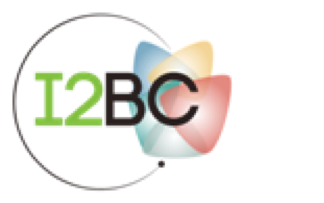
Documentation
This web site provides a comprehensive access to NAPP results for over 1000 bacterial and archaeal genomes. | |||||||
|
1. NAPP home page | |||||||
|
2. RNA-rich Cluster Page | |||||||
| This page presents a tabulated list of RNA rich clusters for the selected species, providing for each cluster the following information: | |||||||
| -Cluster number | |||||||
| -Number of elements in cluster | |||||||
| -Number of annotated genes in cluster | |||||||
| -Number of tiles in cluster | |||||||
| -Number of known RNAs in cluster | |||||||
| -ncRNA-enrichment P-value. | |||||||
| The following actions are available: | |||||||
|
Clicking on cluster numbers or P-values leads to the corresponding cluster contents page. | |||||||
|
The Make contigs button leads to the Contig page (see below). | |||||||
|
The View profiles button leads to the phylogenetic profiles page (see below). NAPP profiles are generated on the fly which may cause a few seconds delay. | |||||||
|
The Search for position button shows all elements from RNA-rich cluster that are located in a given sequence interval (enter a position interval and select a chromosome name). Elements are presented in the same format as in the "cluster contents" page) | |||||||
| Export all clusters as CSV: Exports CSV file containing the contents of all RNA-rich clusters, with for each cluster element: Name, Coordinates, Genbank id of chromosome, description of element | |||||||
| Export all clusters as GFF: Exports GFF file containing the contents of all RNA-rich clusters | |||||||
|
3. Cluster contents page | |||||||
| - Gene name or "tile" status | |||||||
| - Positions in the genome | |||||||
| - GenBank Id of chromosome | |||||||
| - Description of element | |||||||
|
The header line on top is a reminder of the characteristic of the current cluster: Cluster Id, number of elements, number of tiles, number of genes, P-value of ncRNA enrichment. | |||||||
| Export as CSV: Exports CSV file containing contents of clusters, with for each cluster element: Name, Coordinates,Genbank id of chromosome, description of element | |||||||
| Export as GFF: Exports GFF file containing the contents of clusters | |||||||
| See section 6 for description of the CSV and GFF formats. | |||||||
|
4. Contig page | |||||||
| Table colums contain the following : | |||||||
| - Contig | |||||||
| - GenBank Id | |||||||
| - Tiles | |||||||
| - Description | |||||||
| Export contigs as CSV: Exports CSV file containing contents of Contigs, with for each contig: Region, Genbank id of chromosome, Tiles, description of elements | |||||||
| Export contigs as GFF: Exports GFF file of contigs | |||||||
|
See section 6 for description of the CSV and GFF formats. | |||||||
|
5.Profile page | |||||||
|
Moving cursor across columns shows Gene Ontology term biases in the coding sequences (CDS) and a contents summary for the corresponding clusters. | |||||||
|
Clicking on a cluster column leads to the corresponding cluster page | |||||||
|
6. File formats | |||||||
|
GFF3: GFF3 is a flat tab-delimited format used by most genome browsers. The first line of the file is a comment that identifies the file format and version. This is followed by a series of data lines, each one of which corresponds to an annotation: | |||||||
| Column 1: "seqid": The ID of the landmark used to establish the coordinate system for the current feature (here "Genbank id"). | |||||||
| Column 2: "source": a free text qualifier intended to describe the algorithm or operating procedure that generated this feature (here "NAPP" or "Genbank"). | |||||||
| Column 3: "type": The type of the feature (here type of element "TILE","rRNA", "tRNA", "CDS or "CONTIG"). | |||||||
| Columns 4 & 5: "start" and "end": the start and end of the feature relative to the landmark given in column 1 (here start and end of element). | |||||||
| Column 6: "score": The score of the feature (here ".",meanings no score is available). | |||||||
| Column 7: "strand": The strand of the feature. + for positive strand, - for minus strand, and . for features that are not stranded. | |||||||
| Column 8: "phase": For features of type "CDS", the phase indicates where the feature begins with reference to the reading frame (here ".", "0"). | |||||||
| Column 9: "attributes": A list of feature attributes in the format tag=value. Multiple tag=value pairs are separated by semicolons. Here attributes include, depending on the element type: Internal NAPP ID, NAPP cluster number, Genbank annotation, RFAM match. | |||||||
|
7. References | |||||||
| [1] Ott A, Idali A, Marchais A & Gautheret D. (2011) NAPP: the nucleic acid phylogenetic profile database. Nucl. Acids Res. [Epub Ahead of print] | |||||||
| [2] Marchais A, Naville M, Bohn C, Bouloc P & Gautheret D. (2009) Single-Pass Classification of all Non-Coding Sequences in a Bacterial Genome Using Phylogenetic Profiles. Genome Res. 19:1084-92. | |||||||
| [3] Marchais A, Duperrier S, Durand S, Gautheret D, Stragier P. (2011) CsfG, a sporulation-specific, small non-coding RNA highly conserved in endospore formers. RNA Biol. 2011 May 1;8(3). | |||||||
For comments or questions, please e-mail to napp.biologie@u-psud.fr |


